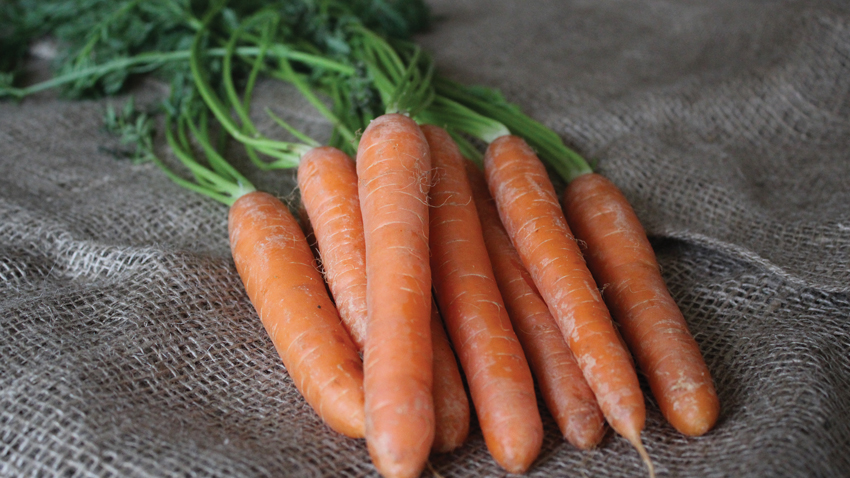Each month we take a little look at a common garden pest. This month, we’re talking about Carrot Fly. Carrot Fly has an annoying habit of ruining the roots, so that instead of pulling up beautiful carrots like these ones, you end up pulling up a sad looking bunch of blemished roots.
The carrot fly lays its eggs at the base of the carrot stems (and often also lays eggs by parsnips and celery). When the eggs hatch the larvae bury into the soil and start feeding on the roots. Initially the damage is quite minimal, but as they mature they start to tunnel into the roots. It can go unnoticed until either the leaves start to discolour, or you pull up a carrot and see the damage – brown, rotten looking patches and tunnels through your carrots.
There are many methods of control and prevention put forward by growers, and to be honest there is no clear winner. Some seasons are just worse than others, and if it’s a bad season for carrot fly then you may find that no matter what you do, they somehow manage to get to your crop! However, it’s still worth taking precautions and this is what we do:
- Be careful with your carrot tops. Carrot flies are attracted by the smell of the leaves, and the scent gets stronger when the leaves are bruised or disturbed.
- Use companion plants to mask the scent of the carrots. It’s not proven, but it makes sense – plant strong smelling plants like garlic, onions and leeks, or put pots of herbs like mint near your carrots to hide the scent. We often alternate rows of carrots with rows of onions.
- Protect them with insect mesh. Draping horticultural fleece or making an enviromesh cloche tunnel to go over your carrots offers the best barrier. It won’t be completely fly-proof, but together with the points above you will drastically minimise the chances of the pests getting to your crop!

